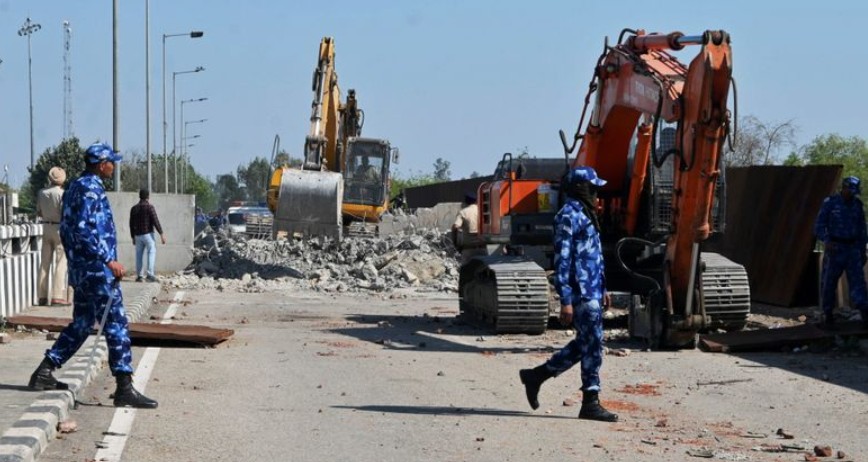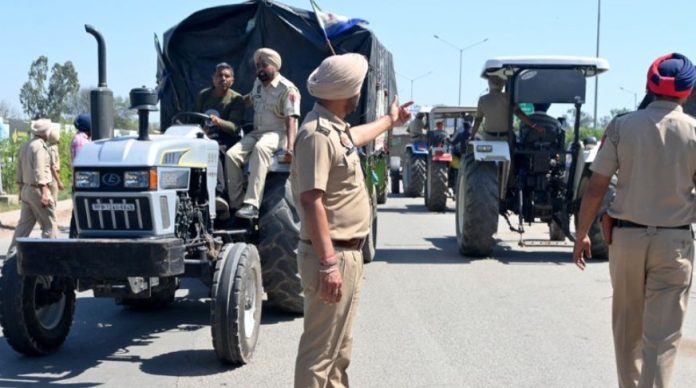The Punjab government has justified its actions at various farmer protest sites, emphasizing that its response was necessary due to credible intelligence reports indicating potential violence. The decision to deploy security forces and implement restrictions was taken as a precautionary measure to maintain law and order while ensuring the safety of both protesters and the general public. The government has asserted that while it respects the right of farmers to protest, it cannot compromise on public safety, especially when intelligence reports suggest possible disruptions.
Tensions have been rising between the government and protesting farmers, who have been staging demonstrations demanding better minimum support prices, loan waivers, and other agricultural reforms. The protests, which have been ongoing for months, have drawn significant attention, with thousands of farmers from different parts of Punjab and neighboring states gathering at key locations. The state administration has maintained that it is open to dialogue and negotiation but has also stressed that it will not allow any unlawful activities under the guise of protests.
According to officials, intelligence agencies had warned of a high likelihood of violence at the protest sites. Reports suggested that certain groups with vested interests were planning to escalate tensions, potentially leading to clashes with law enforcement agencies. Based on these inputs, the Punjab government decided to take preemptive measures, including increasing police presence, setting up barricades, and monitoring the movement of people and materials to and from the protest sites. These steps, according to the government, were taken not to suppress dissent but to prevent any untoward incidents that could put lives at risk.
Government spokespersons have repeatedly emphasized that while peaceful protests are a democratic right, there have been instances where demonstrations turned violent, leading to damage to public property and injuries to civilians and law enforcement personnel. In the past, some protests have witnessed incidents of stone-pelting, arson, and clashes, which have not only caused disruptions but have also led to injuries and arrests. The state government, in its justification, pointed out that similar intelligence inputs had been ignored in the past, leading to regrettable consequences. This time, authorities were determined not to take any chances and acted in advance to prevent a repeat of such situations.

The government has also stated that multiple attempts were made to engage with the protesting farmers before taking any restrictive measures. Senior officials and political leaders reached out to farmer unions, urging them to ensure that the protests remained peaceful and did not create law and order issues. However, when intelligence reports continued to indicate a potential for violence, the administration decided that security measures were necessary.
Despite the government’s justification, farmer leaders have strongly opposed the increased security presence, arguing that it amounts to intimidation. Many farmer organizations have accused the state of attempting to suppress their movement by using heavy-handed tactics. They argue that the presence of security personnel, barricades, and surveillance measures is an attempt to discourage them from continuing their protests. Farmer unions maintain that their agitation is entirely peaceful and that they have no intention of resorting to violence.
Protesters have also alleged that the government’s justification of intelligence inputs is an excuse to clamp down on their movement. According to them, such claims have been made before to discredit protests and create a false narrative of unrest. Some leaders have pointed out that during previous farmer protests, similar justifications were given to justify police actions, including water cannons, tear gas shelling, and detentions. They argue that these measures only escalate tensions rather than resolving the issues at hand.
Adding to the controversy, opposition parties in Punjab have criticized the government for its approach. Political leaders from opposition parties have accused the ruling administration of failing to address the concerns of farmers and instead resorting to suppressive tactics. They argue that the government should focus on resolving the issues raised by the farmers rather than using security concerns as a pretext to tighten its grip on the protests. Some leaders have even accused the government of acting under pressure from the central government, which has been engaged in similar standoffs with farmer organizations at the national level.
Human rights activists have also weighed in on the matter, raising concerns over the excessive use of force against protesters. They argue that even if there were intelligence reports suggesting potential violence, the government should have engaged in further dialogue rather than increasing security measures that create fear among protesters. Some activists have called for independent investigations into the intelligence claims, suggesting that such reports should not be used to justify crackdowns without sufficient evidence.
Meanwhile, the Punjab government has reiterated its commitment to ensuring peace while allowing protests to continue within legal boundaries. Officials have stated that security measures will be adjusted based on the situation and that if the protests remain peaceful, there will be no unnecessary restrictions. However, they have also warned that any attempts to incite violence will be dealt with strictly.
Farmers, on their part, remain determined to continue their movement until their demands are met. They have vowed to intensify their protests if the government does not engage with them in meaningful negotiations. Some farmer groups have even threatened to block major highways and hold rallies across the state if they continue to face restrictions at protest sites.
Observers believe that the situation is at a critical juncture, with both sides holding firm on their positions. While the government is focused on maintaining law and order, the farmers are resolute in their pursuit of justice for their demands. The coming days will be crucial in determining whether the government’s justification holds ground or if it leads to further confrontations.
The role of the media has also been significant in shaping public perception of the issue. Some media outlets have highlighted the government’s perspective, emphasizing security concerns, while others have focused on the farmers’ grievances and allegations of suppression. The narrative being presented to the public is influencing opinions on the matter, with some citizens supporting the government’s security measures while others sympathize with the protesters.
Amidst the growing tensions, experts suggest that a middle ground must be found to prevent the situation from escalating further. Many believe that an impartial committee should be formed to assess the intelligence inputs cited by the government and determine whether the security measures were indeed necessary. This would not only ensure transparency but also help in rebuilding trust between the government and the protesting farmers.
As the protests continue, all eyes are on how the Punjab government will navigate the crisis. Will it continue to justify its actions on the basis of security concerns, or will it take concrete steps to address the underlying issues raised by the farmers? The answers to these questions will determine the future course of the movement and the relationship between the government and the agricultural community in Punjab.


